How a boy from Amravati went on to architect one of the largest consumer internet startups of India - the story of Pramod Jajoo
Today we feature Pramod Jajoo, who has crossed multiple chasms across technology, startups and investment world. Pramod is the man behind BigBasket’s systems, having helped build them ground up. From where he started, it's incredible to see what Pramod achieved and how.
You can sense the air of calm that surrounds Pramod Jajoo every time you meet him. Look deeper, and you’ll get to know the man behind some of the most successful technology and internet companies in India and the US.
Pramod is a Venture Partner at Kalaari Capital and the former CTO of BigBasket, who built one of the most innovative consumer internet companies from India. His story is an excellent example of how one’s technical expertise and passion for learning can lead to big achievements. This is the inspiring story of a man from Amravati who couldn’t speak English when he entered college, but went on to lead technology teams in the US.
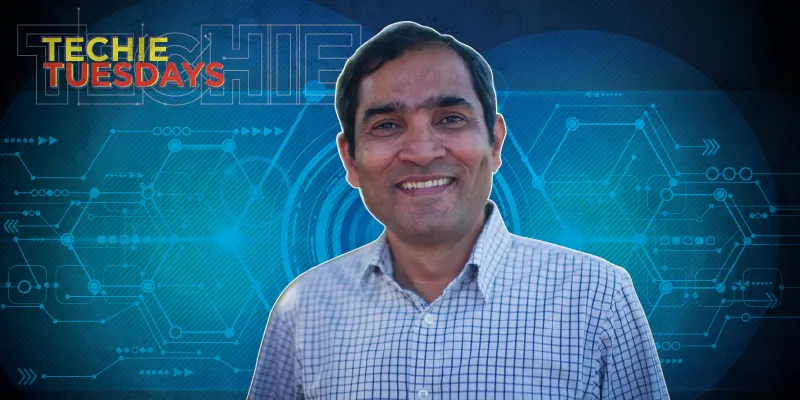
Hero of Amravati
Pramod was born and raised in Amravati, Maharashtra. His mother was a homemaker, and his father, who had a doctorate in physics, was a major influence on Pramod.
Pramod studied in Marathi medium until Class 4, and then with English as his secondary language from Class 5 to 10. He had a keen interest in cricket, and loved listening to the commentary - to such an extent that he was the one in class who owned a pocket radio. Pramod had a keen interest in mathematics and topped the district in his 10th and 12th board examination.
He wasn’t aware of IIT-JEE or BITS Pilani and wanted to study at the College of Engineering, Pune, the top engineering college in Maharashtra (except IIT-Bombay). It was only when one of his friends planned to apply to BITS Pilani that Pramod applied as well. He planned to study computer science since it was more mathematics oriented than electronics engineering.
Also read - The making of Jyoti Bansal - from a small town in Rajasthan to building a multibillion-dollar tech company
The fascinating journey @ BITS Pilani
Pramod says he found BITS Pilani fascinating, given his background. He remembers those years as arguably being the best of his life in many ways.
From the very first year, he spent time at the Information Processing Centre (IPC). “In 1985, we had IBM 1130s with punch cards as our systems, which were later replaced by HP 9000 computers. Finally we got personal computers (running DOS) by the third year.”
Pramod took a course in Pascal (introduction to programming) in the first year, which started his love affair with programming and computers. In college, he learnt C programming on his own, and was the silver medalist in his batch.
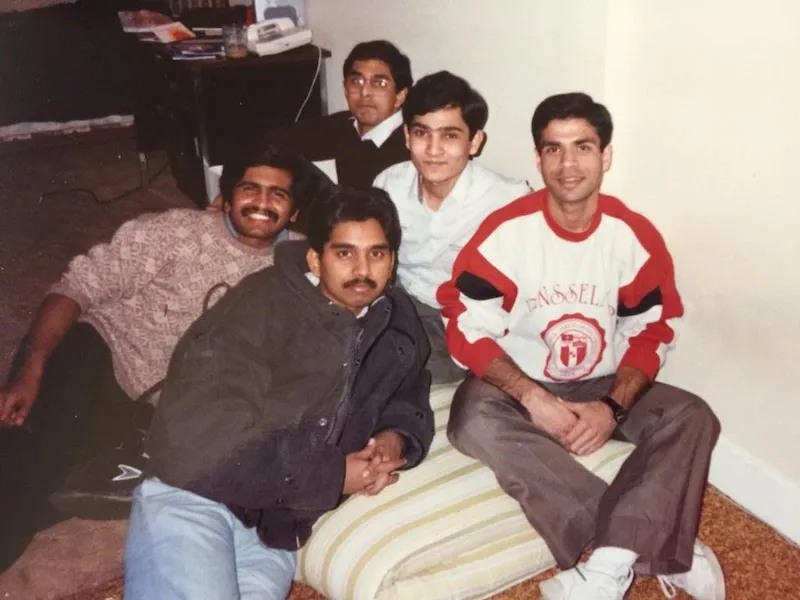
All work and some play
Pramod interned at the Bhabha Atomic Research Centre and worked on a Pascal project, which was a good learning exercise. For his second internship, he chose National Informatics Centre where he worked on an email system. Pramod says,
“NIC, at that time, had the mandate of digitising India. They were trying to network all the districts of India and provide them email connectivity.”
At the NIC lab, Pramod and some friends as a prank wrote a program through which they put a trojan horse in every computer. “The systems had Xenix operating system that time, and the program’s shell script was running on top of it. No matter what a user typed, we would dump it into a file and say 'incorrect password' and then boot up the actual real program. So, we had the passwords of all the users and could log into any systems.”
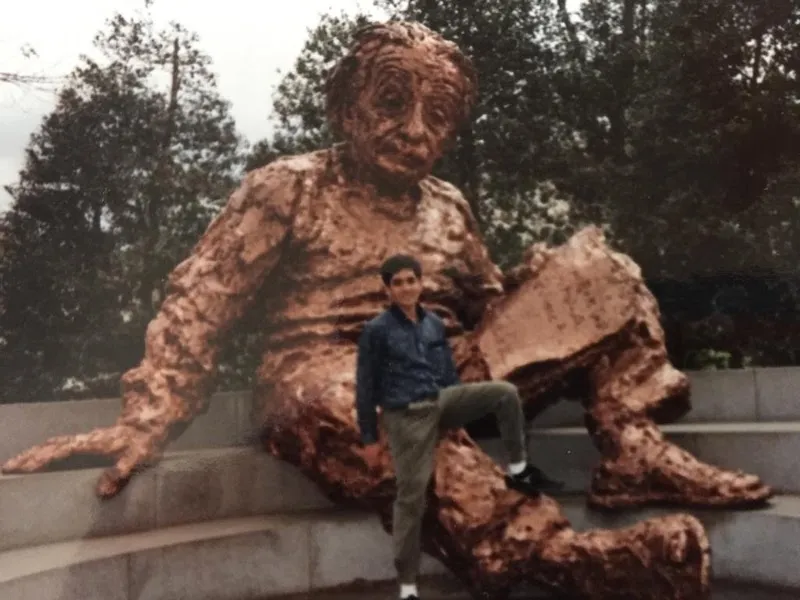
High grades, but low GRE score
During his final year, Pramod saw most students were keen on going abroad for higher studies. “I remember that while having samosas at the canteen, everyone would have their list of words (for GRE preparation) ready.”
The ghost of English still haunted Pramod, and that hit his GRE scores. So, even though his grades were great, he couldn't get a scholarship.
Pramod bagged a teaching assistantship at RPI (Rensselaer Polytechnic Institute) and as part of that, had to go through a spoken English language test. He failed the test as his pronunciation wasn't good enough and hence, instead of teaching classes, he was given the job of grading students. Pramod took up a spoken English course at the college, and would then occasionally teach classes (on Data Structures).
Related read - Meet Anil Goel — the architect behind Hike messenger and Oyo’s scale
Project work and grad life
Pramod’s first project was in genomics (genome sequencing). “Everyone then thought that this problem (of genome sequencing) would be solved in the next two to three years. Eventually, it took more than a decade.” He didn't find the research interesting, and decided to move on.
He then picked up a semester-long project on computer vision called 'Detecting Edges in Satellite images' for extracting features from images. Another project was to write a compiler, design a language, and actually write the front-end to get into the intermediate code. The program was written in C running on UNIX.
After working with compilers, Pramod decided he wanted to explore the compilers group and programming languages and tools. He excelled in academics at RPI but after the 1990 recession in the US, the job market was tough when he graduated in 1991. “I had sent tonnes of resumes. People would post jobs in news groups on internet. I remember one news group called soc.cult.indian. Through my seniors in Microsoft and Sun Microsystems, I interviewed at both the places.”
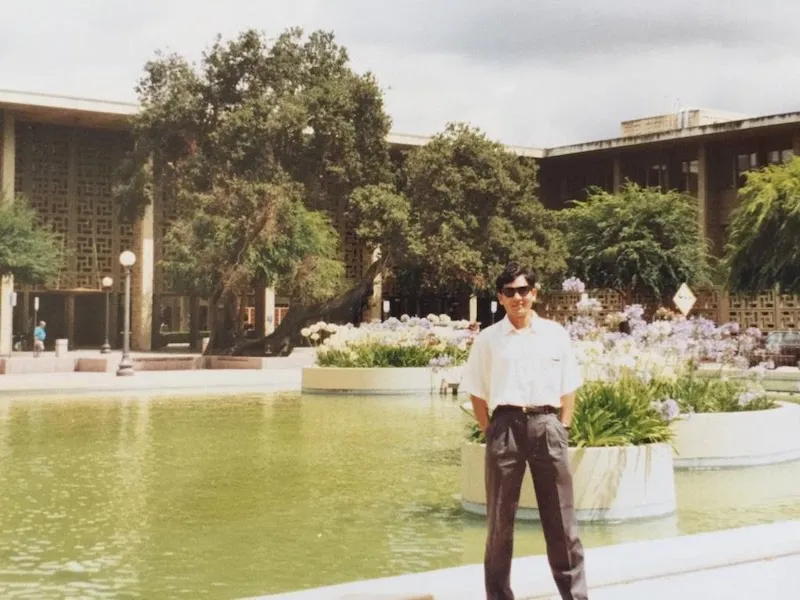
Build master @ Sun Microsystems
Pramod got job offers from Sun Microsystems and Oracle in the Bay Area and decided to join the former as the offer was in programming languages and compilers, and also because Oracle took time to get back.
The role at Sun was that of a build master, what's today known as DevOps - ensuring builds, packaging, running a lot of shell scripts, and automating build processes. This predated CI/CD automation. For Pramod, the company excited him more than the role. Sun Microsystems was then the magnet for techies in the area.
“Build master was for the compiler group. The backend of the compiler is the optimiser and code generator. We had FORTRAN 77 and C front end compiler, and C++ compiler was just coming up. The idea was to automate the check-ins (today's equivalent is continuous integration) - as people check-in code, the code goes into SCCS. It was mostly writing shell scripts. I used The Bourne Shell and automated everything - from building the compiler to packaging it to running the test suite automatically.”
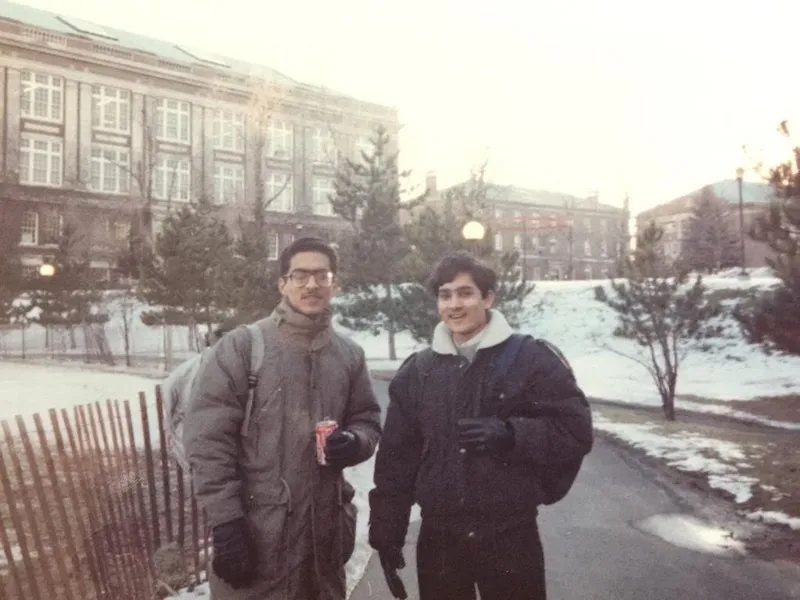
His first independent project
At Sun Micrsosystems, Pramod’s manager's group was working on sustenance engineering, managing the previous generation of compiler backends. He joined the group and was responsible for a wide variety of things from compiler driver to tools (code coverage tools like Lint) and bug fixing. At that time, Sun Microsystems wanted to introduce licensing in the Sun compiler, and decided to use FLEXlm for this. Pramod’s job then was to integrate the code in Sun’s system. This was his first big independent project. He remembers his manager reviewed his code and taught him to write actual readable code for the first time. Until then, Pramod was focused on functionality without any stress on readability.
“It was not a trivial project because of the floating licence. It used to take a long time to acquire a licence. So, I came up with an innovation that we'll cache it from local server to optimise.”
Pramod moved to the debugger team, and worked on run time checking - to find memory leaks and dynamically instrumenting the code. “The big bane of many large programs on UNIX side is core dump i.e. trying to access the piece of memory which is protected by the operating system. We would actually take instructions and patch them on the fly. So, the debugger was running on this patched code and it would automatically try to insert check points in various places and thus keep track of memory allocations as well.”
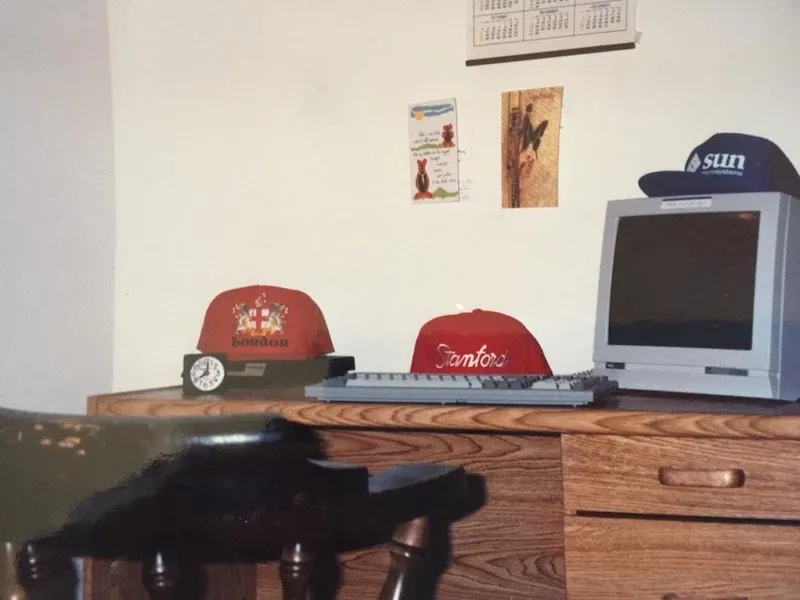
The Java affair and the startup itch
Java had just been introduced in 1995 and Pramod was part of the division called Sun Pro (Sun Programming), which was a part of STE.
Pramod’s team at Sun thought of taking Java to non-programmers and created their own component architecture, which took about a year to build. This was called Java Studio. In the meantime, Java came up with its own component architecture called JavaBeans. Java Studio wasn't commercially successful, so Sun didn't release a version 2.
“At that time, the Java applet became very big because NetScape decided to partner with Java and NetScape browser licensed JVM. The idea was to ask artists to create some Java applets that you can put into a webpage.”
By that time, Pramod had been promoted and the company had grown larger as well. Bitten by the startup bug, Pramod quit Sun and joined a startup that was working in the area of distributed computing. Things, however, didn’t go as planned. “When I joined the startup, it was different with reference to what we were doing versus what I was told we'll be building during the interview. I knew something wasn't right, so I left in two months, the shortest stint in my entire career so far.”

The growth at Healtheon
Pramod joined internet B2B healthcare startup Healtheon in 1998. Healtheon was then a two-year-old company, which had already reached high visibility in the Valley because it was founded by Silicon Valley legend Jim Clark who had earlier founded SGI and NetScape (with Mark Andreessen).
At that time, there were no app servers, no WebLogic, and all companies had to build a lot of server component. At Healtheon, Pramod built browser interface and a physical (desktop) application. He worked on CORBA and Microsoft Technologies (Visual Basic) on the backend and front end.
In a year, he transitioned from senior engineer to a managerial role. Healtheon went on to launch an IPO and later acquired WebMD, a B2C healthcare portal which had partnerships with the likes of MSN Health and Yahoo Health. For the combined entity, Pramod worked on consumer search functionality. He adds, “We wrote our own search engine and I managed and enhanced the same.”
Healtheon grew from 150 people to a 3,000-people team when Pramod left.
Related read - Meet Kiran Bhat—the man who engineered Hulk and Tarkin to win 2017 sci-tech Oscar
The crash and a decade-long stint
Pramod joined HotDispatch as Director of Engineering in 2001. HotDispatch offered a technical expertise marketplace and infrastructure software for community knowledge management. It was like a Stackoverflow that was paid. When Pramod joined, its product was built on Lisp, so he decided to architect the new product in Java. HotDispatch had recently raised $9 million, but shortly after that the dotcom bubble burst. A couple of months later, the company shut down as the investors decided to pull the plug.
“I believe I had the fortune or misfortune to get laid off because you learn a lot through that experience.”
Finding the next job was tough because while people were still hiring hands-on developers, they were not really looking for managers/ directors. Finally, he joined Xora, where he was responsible for all aspects of engineering and product development.
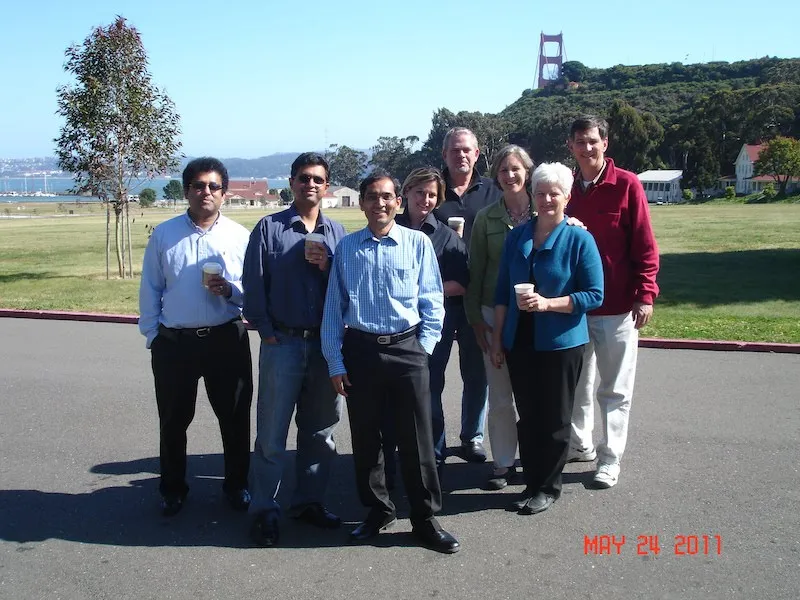
Pivot by accident, journey at Xora
Xora was building app servers to mobilise enterprise applications like CRM and other enterprise applications using voice interface and input capability in WML-based phones. The company was building notifications server, offline application servers and many more products on its platform. After the market collapse of 2001 following the World Trade Centre attack, Xora’s sales became challenging as the ticket size was high (>$100,000).
The company pivoted to SaaS almost accidentally when one of its clients wanted a time sheet application built. Soon, everyone wanted to use it, and preferred a subscription model. The idea was productised in two months and the application was built using Java, Java application server, and Oracle backend.
By the time product was out, Pramod had decided to move back to India and launched Xora’s India centre. Soon, majority of the team was in India and the US team had to be downsized. “It was a traumatic experience for me as I had to lay off people for the first time. I was on the other side of the fence this time.”
In 2003, Pramod was in India for two months to set up the office. His first hire in India was the HR manager, who stayed with him for 10 years.
Though the work was exciting, it eventually got tiring as Pramod managed two teams – in the India and the US. In 2008, Xora went through a lean period because of the market crash and Pramod had to again lay off staff. “We had a sharp downturn in our business and as a result we had to do cost correction twice.” Working on rebuilding the team, Pramod had already spent a decade in the company.
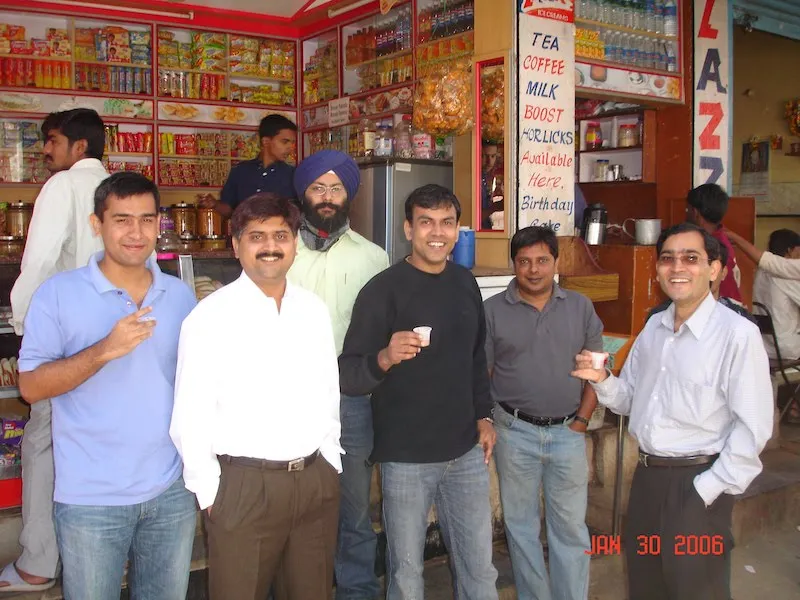
Building in India for India - BigBasket
Pramod was looking to do something India-specific when he met Srinivas Anumolu from GrowthStory, who suggested he join BigBasket as the CTO. Pramod met V S Sudhakar (Co-founder, BigBasket) and was on board. When he decided to join the company, it had just one member engineering team.
The BigBasket website was up and running, and taking orders when Pramod joined. Abhinay Choudhari was running ShopAsYouLike, an online grocery in Whitefield area of Bengaluru. It was folded into BigBasket, and the platform was used as a starting point.
Also read - How Shashikant Khandelwal is making Facebook ads relevant for over a billion people
The first 2 years at BigBasket
ShopAsYouLike was built on Python, and Pramod decided not to change the platform while building BigBasket. “The downside of Python was that it's slower than most of the other server technologies like Java. The plus side was that it gives developers huge productivity, which is a big advantage as a startup. One could compensate on the slowness by throwing more machines.”
In the beginning, everything at BigBasket was on one machine. Pramod started looking at redundancy, separating logical components from physical components. One of the first hires he made was an DevOps engineer. BigBasket was hosted on Linode, which was changed to AWS. Things kept growing thereafter.
Pramod’s past experience with scaling products helped him in his journey at BigBasket. His goal was to stay 8-12 months ahead of business needs and for first two-and-a-half years, the BigBasket team, including QA, was only 10 people. They spent a lot of time on the backend.
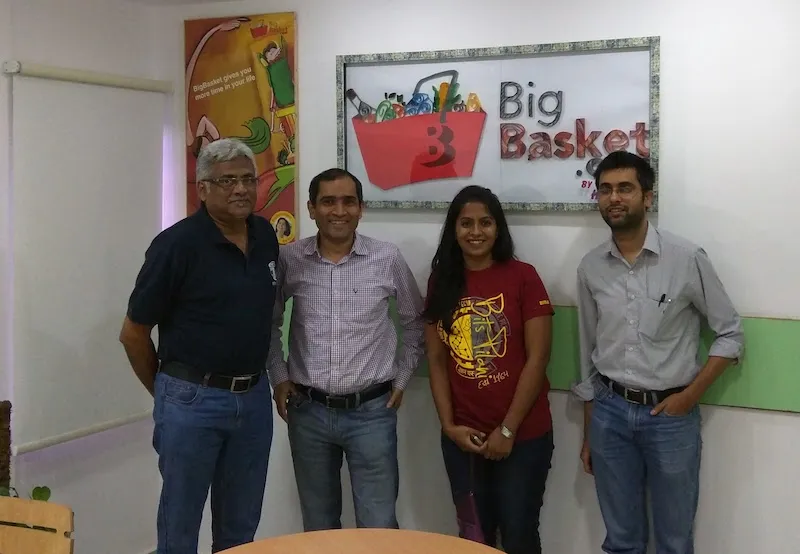
During that time, BigBasket did a complete pivot on the business model from no inventory to asset-heavy due to customer dissatisfaction. The company got on board partners to help with warehouse management system and went through a big application architectural change.
“It was like version 2.0 of the entire backend. We were expanding multi-city at that time. The earlier product (ShopAsYoulike) wasn't built for that in the backend (because prices of groceries are different for different cities). So, we had to support that and this kept us quite busy in the first year.”
BigBasket added more components like a promotion engine, upgraded the website, and in parallel built the app (through external companies). The app's first version was buggy and slow, so it had to be iterated multiple times. Eventually, Pramod brought the app development in-house and rehauled it to version 2.0. His decade long-experience of building mobile applications at Xora came handy here.
You may also like - Meet Mitesh Agarwal—the 'brain' of BITS who’s heading technology at Oracle India
Growth and tech stack at BigBasket
Two-and a-half-years into BigBasket, Pramod hired the company’s first product manager, and got in more managers - Director of Engineering, VP Engineering, and VP Product.
The tech stack at BigBasket was pretty current on the Python side with a lot of open-source components. The team used NodeJS and AngularJS, and Solr powered the search. For caching, the company had started with Memcached, but then moved to Redis and eventually to AeroSpike. They started with no queues to RabbitMQ as their queueing server, and eventually to Kafka (as RabbitMQ had scalability issues). They also used a lot of AWS services to achieve scalability.
“First two years were backend focused, i.e. using technology to make our backend operations more efficient. It might not be very fancy from a technology perspective, but was very important from a process perspective (picker efficiency, order tracking, inventory management etc). We focused 80 percent on backend and 20 percent on user/customer-facing work.”
In his third year, BigBasket focused on both, customer-facing and backend-related work. Pramod believes BigBasket is a backend-focused company and that’s by design. “BigBasket is not about taking an order. Nobody cares about a fancy product display and checkout without on-time delivery. So, all the way from merchandising person to sourcing (integrating collection centre into backend), it has to be functionally efficient.”

The ‘additions’
Soon, BigBasket added two new business lines - B2B kirana business which is pretty big today, and express service. It took the team four to five months to build it and they added marketplace support, which is a speciality business where customers can order cakes, sweets, flowers etc from different vendors through BigBasket. Deliveries are through BigBasket’s last-mile delivery infrastructure, formed by the acquisition of Delyver.
Related read - How BigBasket drove the grocery ecommerce business before it became a buzzword
Key decisions @ BigBasket
Looking back, Pramod says some key decisions were crucial in the journey of BigBasket:
- Getting on AWS from Linode
- Re-architecting almost all the components to prepare for scaling up and to stay ahead of the curve.
“If I had known we would have grown so fast, I would have created a dedicated platform team. But the truth is you don’t know what you don't know and you make a lot of decisions early because you want to keep it as lean as possible.”
Pramod emphasises on security, and recalls an incident that took place a few years ago when the company had an outage on DDOS and the site was out for almost 2-3 hours. “It was hobbling (came online, then went off again) for those 2-3 hours. We were piloting WAF DDOS protection then. In hindsight, we should have implemented it (WAF) earlier. You can't take your infrastructure for granted. As you grow larger and larger, it's just a matter of time when you get attacked.”
Also read - From UP to the US: The journey of Abhinav Asthana and his affair with APIs
Crossing the startup-investor chasm
Pramod’s parents, who still lived in Amravati, met with an accident while on their way to meet him in Bengaluru. His father succumbed to his injuries in two weeks, which left Pramod emotionally drained.
“I had always told my mother that I would spend time with her and my father but didn't do, so I wanted to take a sabbatical.”
While on his sabbatical, Pramod met Vani Kola, Managing Director, Kalaari Capital, and she invited him to advise some of Kalaari’s portfolio companies on their technology. He realised he had the opportunity to have a multiplier effect and joined Kalaari Capital as a Venture Partner.
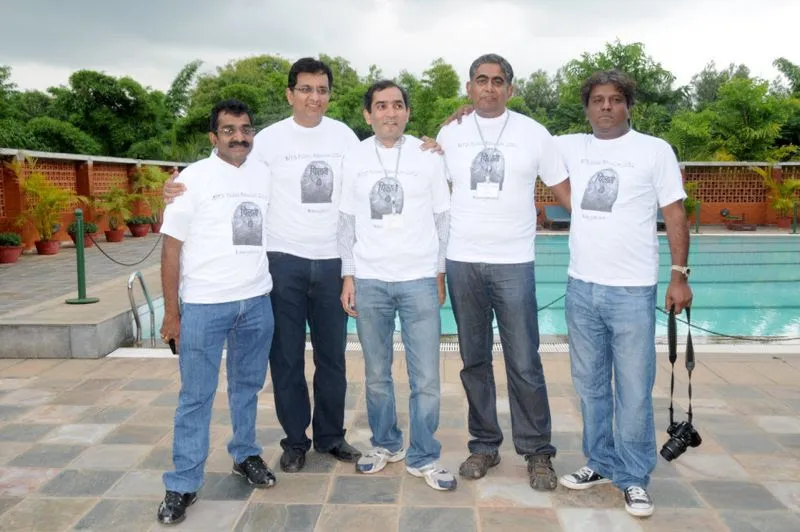
Hiring philosophy
According to Pramod, creating a culture is very important. His first presentation in BigBasket was on values and culture. He believes there are many values for success, but over a period of time, the most important one is the passion for learning. Pramod often asks the candidates – ‘what did you learn in last six months (or a year) that your job did not require you to learn.’ That shows the drive in the person.
He also looks for a culture fit – an individual’s values have to align with those of the organisation. Lastly, he looks for a person's ability to transform to a senior.
Also read - BigBasket's Pramod Jajoo lists 7 principles to build sticky products for the next billion
Startups’ tech mistakes
According to Pramod, some early stage startups tend to make one (or more) of the following mistakes:
- Many don't set up/express their culture.
- Techies at times get too enamoured with technology. A simple solution can solve the problem, and one need not only look at complicated technology every time.
- They forget to keep it simple. Don't put complexities early on in your tech stack and technology architecture.
Pramod believes technology is anything that makes users’ life easier.
Related read - Meet Joydeep Sen Sarma, the IITian who revolutionised big data at Facebook
Value system
Pramod says he wants to be a learner all his life. He learns for the joy of learning, and has inculcated this habit over a long time. Honesty, integrity, and ethics form a strong foundation and he believes in hard work and understands it’s necessary, but not a sufficient condition for success.
What’s next
Pramod is passionate about the Indian startup ecosystem, but says we don’t have a poster child company at the global stage. That motivates him to work towards helping a company grow to the global stage. He believes there’s a serious opportunity to do it in next 5-10 years.
At some point in life, Pramod wants to spend some time for social causes and doing philanthropic work. He believes that if we can change the trajectory of a person through education, we can influence 100 people in that generation because education is a non-linear return investment.
You can connect with Pramod on LinkedIn or follow him on Twitter.
Trivia
- Pramod still has the job offer signed by Larry Ellison. At that time, Larry would sign all job offer letters, even the ones for freshers.
- In his first year at Sun, when Pramod worked on licensing and packaging, he demo-ed to Eric Schmidt, who was then the president of the programming languages and tools group at Sun.







